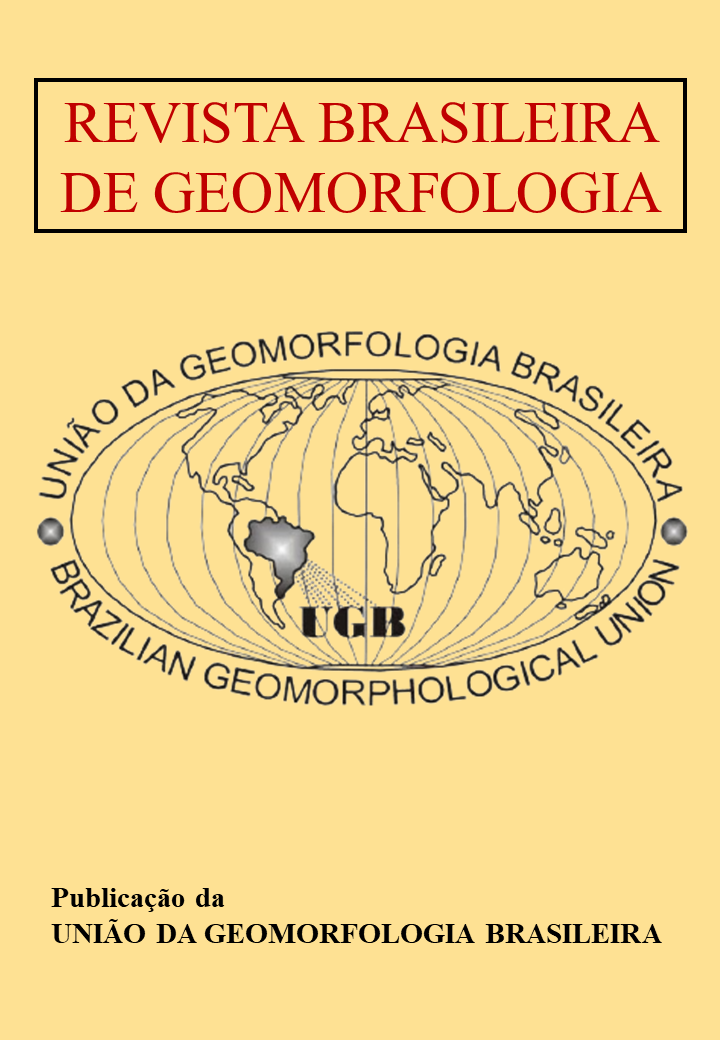Geomorphology of Pereiro Massif, Northeast Brazil
DOI:
https://doi.org/10.20502/rbg.v26i1.2583Palavras-chave:
Differential erosion, Brazilian Semiarid, Granitic Massif, Cosmogenic NuclidesResumo
The Pereiro Massif (Northeast Brazil) is a granite relief situated between the Jaguaribe and Portalegre shear zones, exhibiting strong structural control over its morphology. This study aims to analyze the morphostructural context of the massif and interpret its evolution based on denudation rates, using in situ cosmogenic isotope (10Be) production, OSL dating of colluvial deposits, and GIS-based morphometric analyses. The results suggest that the massif represents a relief inherited from a lithostructural framework associated with the Brazilian orogeny, with Cretaceous reactivations and Cenozoic denudational cycles. Its formation is primarily attributed to differential erosion, driven by the greater resistance of granitoids compared to the surrounding metamorphic lithologies. There is no clear evidence of neotectonic activity influencing regional morphogenesis. Denudation rates range from 10.1 to 24.6 m∙My-1, indicating higher denudation trends influenced by lithostructural and topographic controls. Post-Miocene morphodynamics were shaped by the regional semi-arid climate, punctuated by humid paleoclimatic variations that account for colluviation between the Last Glacial Maximum (LGM) and the Younger Dryas.
Downloads
Downloads
Publicado
Como Citar
Edição
Seção
Licença

Este trabalho está licenciado sob uma licença Creative Commons Attribution-NonCommercial 4.0 International License.
Autor(es) conservam os direitos de autor e concedem à revista o direito de primeira publicação, com o trabalho simultaneamente licenciado sob a Licença Creative Commons Attribution que permite a partilha do trabalho com reconhecimento da autoria e publicação inicial nesta revista.










